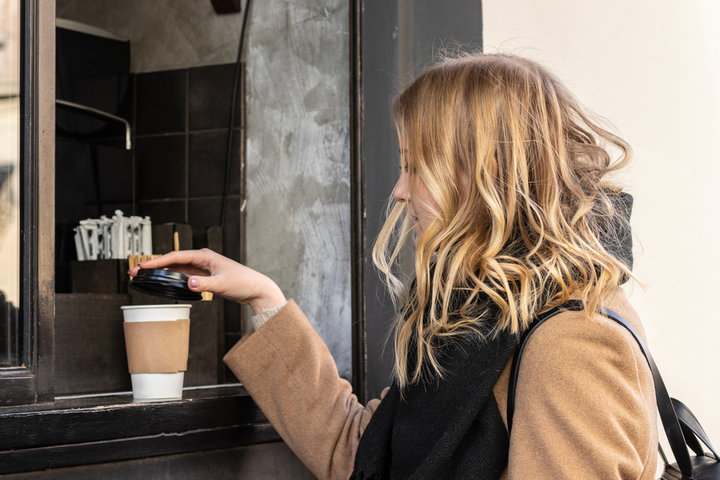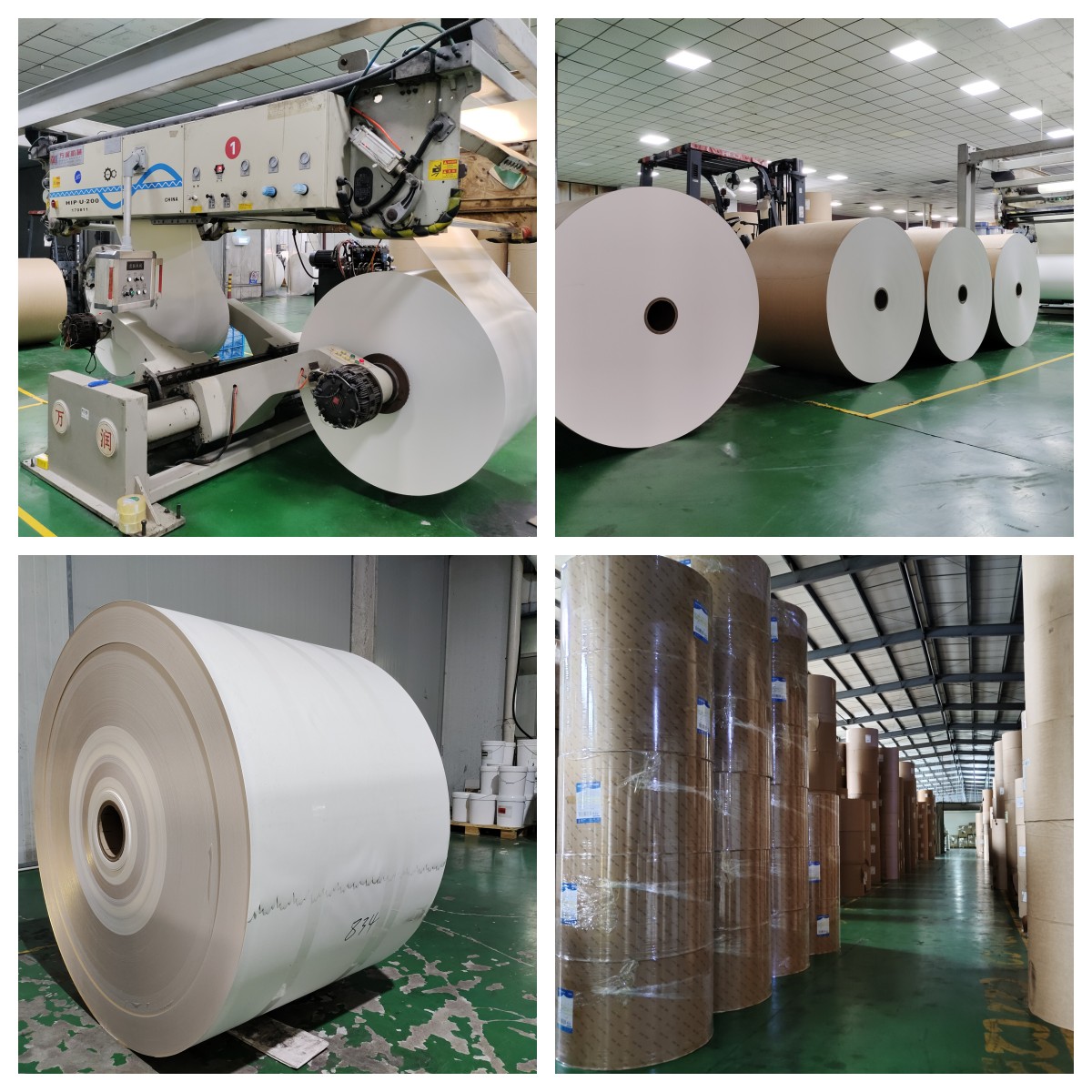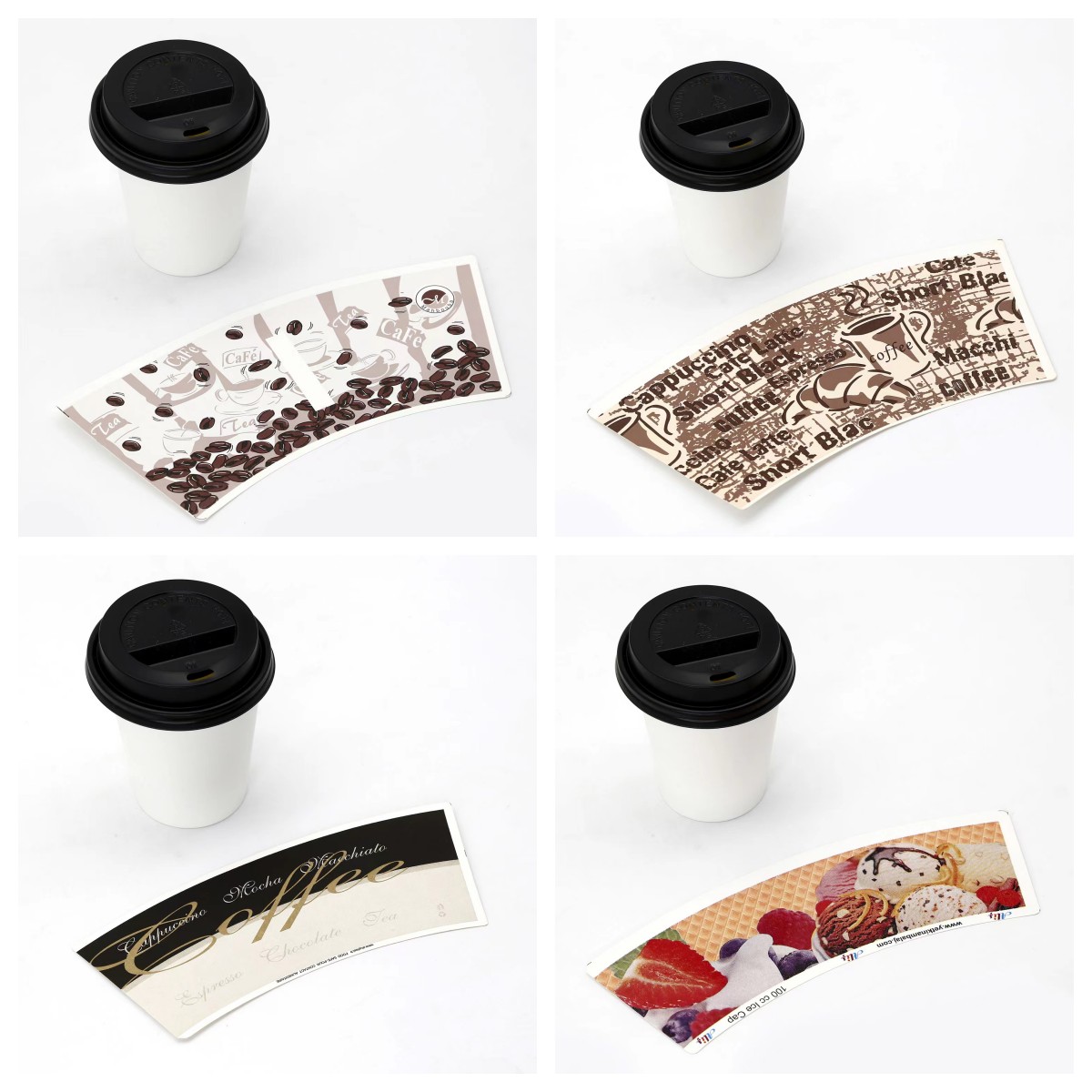
Every day, billions of drinks are served in disposable cups—but are standard or biodegradable paper cups better for the environment? With more eco-friendly options available than ever, it’s important to know what truly makes a difference.
In this article, you’ll learn what sets standard paper cups apart from biodegradable ones. We’ll explore materials, recyclability, decomposition time, and real-world usage. Whether you're a business owner or a conscious consumer, this guide will help you make smarter, more sustainable cup choices.
What Are Standard Paper Cups
Materials and Construction
Standard paper cups look simple, but they’re layered to stay strong. At the core is paperboard—usually made from virgin wood pulp. This layer gives the cup its shape and structure. But that’s not enough. To hold liquids, manufacturers coat the inside with a thin layer of polyethylene (PE), a type of plastic that seals the cup and keeps it from leaking.
Key Points:
Materials Comparison Table
| Component | Material Type | Function |
| Outer Layer | Paperboard | Shape and strength |
| Inner Coating | Polyethylene (PE) | Liquid barrier, waterproofing |
Common Uses
These cups are everywhere. They’re in your favorite coffee shop, stacked beside water coolers, and used for cold drinks in vending machines. Because they’re cheap to produce and lightweight, they work well for fast-paced, high-volume settings.
Where You’ll See Them Most:
To-go coffee and tea cups from cafés
Office water dispensers and vending machines
School events, parties, and food trucks

Challenges with Standard Cups
Here’s the tricky part: recycling them isn’t as easy as it sounds. That thin PE coating inside the cup bonds tightly to the paperboard. Most recycling plants can’t separate the two. So, even though it looks like plain paper, it usually ends up in the trash.
Also, they stick around for a while. It can take decades for a standard cup to break down. Waste facilities often lack the right technology to handle them effectively.
Issues to Know:
Standard Paper Cup Recycling Challenge
| Problem | Cause | Effect |
| Can't recycle easily | Plastic-paper fusion | Low recycling rate |
| Breaks down slowly | Non-biodegradable PE | Landfill buildup |
What Are Biodegradable Paper Cups
Key Materials Used
Biodegradable paper cups might look like regular ones, but they use plant-based materials. The paper layer is usually made from fast-growing plants like bamboo or sugarcane bagasse. These are often certified by responsible forestry programs. Instead of plastic, these cups use coatings like PLA, PBS, or WCP to keep liquids from soaking through.
Common Materials in Biodegradable Cups
| Material Type | Description | Origin |
| PLA | Coating made from fermented corn or sugarcane | Renewable plant-based |
| PBS | Biodegradable plastic that breaks down over time | Bio-synthesized (part fossil) |
| WCP | Water-based polymer used for coating | Water-soluble composition |
| Bamboo/Sugarcane | Fibers pressed into paper layers | Agricultural waste |
Notes:
PLA is compostable only in hot, industrial environments
Bamboo and bagasse paper supports cup strength and fast processing
Compostability vs Biodegradability
Not all cups labeled "biodegradable" are the same. Compostable cups must break down completely into safe, soil-like material—usually within a set time frame. This happens best in commercial composting facilities. Biodegradable cups break down too, but they don’t always turn into compost or break down as quickly.
How They Break Down
| Type | Needs Industrial Facility | Breaks Down at Home | Final Result |
| Compostable | Yes, 60–65°C, humidity | Rarely | Compost (non-toxic) |
| Biodegradable | Sometimes, varies by type | Possibly, slower | Mix of organic material |
Key Differences:
Use Cases
Biodegradable cups are popping up in more places. Cafés use them for branding. Festivals and markets prefer them for easy cleanup. They hold hot and cold drinks well. Many are leak-resistant and sturdy enough for daily use, even when stacked or carried in bulk.
Where You'll Find Them:
Specialty coffee shops that want custom-printed cup designs
Outdoor events and food trucks where trash pickup is quick
Corporate meetings or venues needing bulk disposable options
Customization Features:
Can be printed with logos, slogans, or event branding
Available in different shapes and sizes to match drink types

Head-to-Head Comparison: Standard vs Biodegradable Cups
Environmental Impact
Standard paper cups use a plastic lining. That means they sit in landfills for years—sometimes decades. During breakdown, they may release small plastic particles. Biodegradable cups skip fossil-based linings and break down faster. Still, both require energy to produce, and that creates emissions even before they’re used.
Impact Factors Table
| Aspect | Standard Paper Cups | Biodegradable Cups |
| Production Emissions | Higher (plastic processing involved) | Lower (plant-based coatings used) |
| Landfill Lifespan | 20+ years | 3–6 months (industrial composting) |
| Microplastic Risk | Yes | Minimal to none |
Breakdown and Decomposition Time
Standard cups degrade slowly because plastic linings resist moisture and microbial activity. Biodegradable ones use materials like PLA or PBS, which can decompose more quickly—but only under heat and moisture in compost facilities. Home composting works, but it takes longer and may leave partial residue.
Breakdown Timeline (Average)
| Cup Type | Industrial Composting | Home Composting | Landfill |
| Standard Paper Cup | Not compostable | Not compostable | ~20 years |
| Biodegradable Paper Cup | <60 days (PLA, WCP) | 90–180 days | Slower, varies |
Recyclability
Even though they look like paper, standard cups aren’t easy to recycle. That plastic lining bonds with paper, and most facilities can’t separate them. Biodegradable cups, especially those using WCP, may be accepted in compost bins, not paper recycling, since they aren’t truly “paper” after coating is applied.
Key Differences:
Standard cups often rejected by paper mills
Biodegradable cups compost, not recycled like regular paper
Cost and Availability
Standard cups are usually cheaper upfront. They’ve been mass-produced for decades, so materials and supply chains are efficient. Biodegradable options cost more due to specialty coatings and certifications. But as demand grows, costs are starting to drop, especially in large orders.
Quick Comparison:
| Category | Standard Cups | Biodegradable Cups |
| Unit Cost (Est.) | Lower | Slightly higher |
| Bulk Availability | High | Growing but varies |
| Production Energy Use | Moderate to High | Moderate |
| Disposal Cost | Standard waste rate | Lower in compost systems |
Durability and User Experience
People expect their cups not to leak, even when filled with hot drinks. Both types are built to handle this, but their coatings work differently. PE lining in standard cups offers solid insulation. Biodegradable cups may soften faster if used for long periods, especially with hot liquids.
What Users Might Notice:
Standard cups feel smooth and rigid with high heat resistance
Biodegradable cups may feel lighter, but still hold well under short-term use
Both can be printed or branded for easy identification
Functionality Features List:
Heat insulation for hot drinks (both types handle 60–70°C easily)
Grip comfort depends more on cup thickness than material type
Stackability and space-saving design available in both options
Misconceptions About “Biodegradable” and “Compostable” Cups
Greenwashing Risks
Just because a cup says “eco-friendly” doesn’t mean it breaks down in your backyard. Some packaging uses vague terms that sound good but aren’t backed by composting standards. Biodegradable and compostable don’t always mean the same thing—or even mean the product breaks down quickly.
Common Misleading Phrases:
“Biodegradable in all conditions” (not true—some need industrial composting)
“Home compostable” with no testing or timeline listed
“Eco” or “green” logos with no certification number
Claims vs Real-World Feasibility
| Claim on Label | What It Really Means |
| Compostable | Only in commercial compost facilities |
| Biodegradable | Breaks down eventually—not always quickly |
| Eco-safe or Earth-friendly | No standard definition or verification |
Regulations and Certifications to Look For
Not all logos are equal. Real compostable or biodegradable cups should carry verified third-party certifications. These ensure the product meets composting or decomposition standards in specific environments. Without them, claims might just be branding.
Recognized Certifications
| Label | Meaning | Verifying Body |
| BPI | Meets U.S. compostability standards | Biodegradable Products Institute |
| FSC® | Paper sourced from responsibly managed forests | Forest Stewardship Council |
| DIN CERTCO | Follows EU biodegradation norms | TÜV Rheinland |
How to Verify:
Look for certification logos and numbers on the packaging
Check official databases (like BPI’s product listing page)
Avoid packaging with only generic eco-symbols
Are Biodegradable Cups Always the Better Choice
When Biodegradable Is Ideal
They work best in places where composting is part of the waste system. Large events often send waste to industrial composting, where biodegradable cups actually break down. Businesses that know where their waste goes can use these cups effectively and reduce handling effort.
Good Scenarios:
Stadiums or festivals with compost bins and collection services
Companies that partner with composting facilities directly
Cafés in cities offering commercial composting pickup
Situations Where Standard Cups Still Dominate
In places far from composting centers, standard cups may still be more practical. If disposal ends up in regular trash, the benefits of biodegradability shrink. For high-volume businesses watching costs, standard cups offer lower prices and easier sourcing.
Where Standard Cups Make Sense:
Small towns or rural areas with no composting infrastructure
Schools or canteens that need to minimize unit costs
Vending or food services requiring high-volume daily supplies
Alternatives to Both: Reusable and Plastic-Free Paper Cups
Plastic-Free Paper Cups
Plastic-free cups look similar to standard ones, but they skip the plastic lining. Instead, they use water-based or plant-based coatings to create a leak-resistant barrier. These coatings allow the entire cup to be treated as paper waste and recycled more easily in regular paper streams.
Key Features:
No PE or PLA lining—uses aqueous or starch-based alternatives
Can be recycled with other paper products in many facilities
Lower decomposition time compared to plastic-coated cups
Quick Comparison Chart
| Feature | Plastic-Free Cups | Standard Cups | Biodegradable Cups |
| Inner Coating Type | Aqueous/plant-based | Polyethylene (PE) | PLA or similar biopolymer |
| Recyclability | High | Low | Not recyclable, compostable |
| Compost Compatibility | Varies (some compostable) | Not compostable | Requires facility |
Reusable Cups as the Most Sustainable Option
Reusable cups cut down waste the most, but they come with trade-offs. They need to be washed after every use, and that takes water and energy. Most studies say it takes around 20–100 uses to balance out the environmental cost of making one reusable cup, depending on the material.
Estimated Use Thresholds
| Material Type | Estimated Uses to Offset Production |
| Stainless Steel | 50–100 uses |
| Hard Plastic | 20–50 uses |
| Glass | 30–60 uses |
Common Barriers to Use:
Some users forget to carry them or don’t want to clean them
Cafés may not always accept them due to health regulations
Heavier and bulkier than single-use options, less convenient
Hygiene Concerns:
Reusable cups need proper cleaning to stay safe
Shared use or poor maintenance can cause odor or bacteria buildup
Not ideal in settings where sanitation can’t be guaranteed

How to Choose the Right Paper Cup for Your Needs
Questions to Ask Before Deciding
Choosing a paper cup isn’t just about what looks good. It depends on where the cup goes after use and how it’s used. If your local waste system doesn’t handle compostable materials, a biodegradable label won’t help much. You’ll also want to think about branding or how well the cup handles heat.
Ask Yourself:
Does the facility or location send waste to an industrial composter?
Will the cup hold hot drinks, and for how long?
Is custom printing needed for logos, slogans, or sizing guides?
Is your team trained to sort compostables from recyclables?
Quick Comparison by Situation
| Scenario | Recommended Cup Type |
| High heat drinks, small café | Standard or plastic-free cup |
| Large event with composting pickup | Biodegradable or compostable |
| Office setting, low sorting control | Plastic-free recyclable cup |
| Budget-focused canteen | Standard single-wall cup |
Tips for Businesses and Consumers
Think beyond the moment the cup is used. How it’s made, how it’s shipped, and how it’s thrown out all matter. Buying cups that match your disposal system reduces waste. Certifications help too—they show the product meets actual composting or recycling standards, not just buzzwords.
Considerations for Better Choices:
Choose cups made with certified materials (look for BPI, FSC®, DIN CERTCO)
Ask suppliers if the cups can go into your local waste stream
Look into double-wall cups if heat protection is important
Consider storage and shipping—lighter cups lower transport emissions
Business Sourcing Tips
| Factor | Why It Matters |
| Certification | Verifies performance in compost or recycling |
| Minimum Order Quantity | Impacts pricing, storage needs |
| Printing Options | Supports branding and customer recall |
| Supply Chain Origin | Affects delivery speed and total cost |
Conclusion
Standard paper cups remain common due to affordability and convenience, but their plastic linings make recycling difficult and slow decomposition. Biodegradable options use plant-based coatings and decompose faster, though they require the right composting conditions. Their benefits depend on proper use and access to suitable waste systems.
The best cup choice depends on your needs. Consider your local waste infrastructure, budget, and how the cups will be used. Whether you're a business or a consumer, make informed decisions. Opt for certified options when possible—and remember, small changes in your cup choices can lead to smarter, cleaner waste management.
Frequently Asked Questions
What makes standard paper cups hard to recycle
They have a plastic lining inside. Most recycling plants can’t separate it from the paper, so cups end up as waste.
Are biodegradable cups really compostable at home
Not always. Many need high heat and moisture, which home composting can’t provide consistently or within a short time.
Do biodegradable cups cost more than standard ones
Yes, usually. Their coatings and certifications raise costs, though prices may drop as demand and production scale grow.
Is there a 100% recyclable paper cup
Yes. Some use plastic-free aqueous linings, making them fully recyclable with regular paper waste in suitable facilities.




























